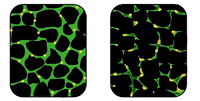
Photo from wikipedia
The bones of the mammalian skull respond plastically to changes in masticatory function. However, the extent to which muscle function affects the growth and development of the skull, whose regions… Click to show full abstract
The bones of the mammalian skull respond plastically to changes in masticatory function. However, the extent to which muscle function affects the growth and development of the skull, whose regions have different maturity patterns, remains unclear. Using muscle dissection and 3D landmark‐based geometric morphometrics we investigated the effect of changes in muscle function established either before or after weaning, on skull shape and muscle mass in adult mice. We compared temporalis and masseter mass and skull shape in mice with a congenital muscle dystrophy (mdx) and wild type (wt) mice fed on either a hard or a soft diet. We found that dystrophy and diet have distinct effects on the morphology of the skull and the masticatory muscles. Mdx mice show a flattened neurocranium with a more dorsally displaced foramen magnum and an anteriorly placed mandibular condyle compared with wt mice. Compared with hard diet mice, soft diet mice had lower masseter mass and a face with more gracile features as well as labially inclined incisors, suggesting reduced bite strength. Thus, while the early‐maturing neurocranium and the posterior portion of the mandible are affected by the congenital dystrophy, the late‐maturing face including the anterior part of the mandible responds to dietary differences irrespective of the mdx mutation. Our study confirms a hierarchical, tripartite organisation of the skull (comprising neurocranium, face and mandible) with a modular division based on development and function. Moreover, we provide further experimental evidence that masticatory loading is one of the main environmental stimuli that generate craniofacial variation.
Journal Title: Journal of Anatomy
Year Published: 2017
Link to full text (if available)
Share on Social Media: Sign Up to like & get
recommendations!